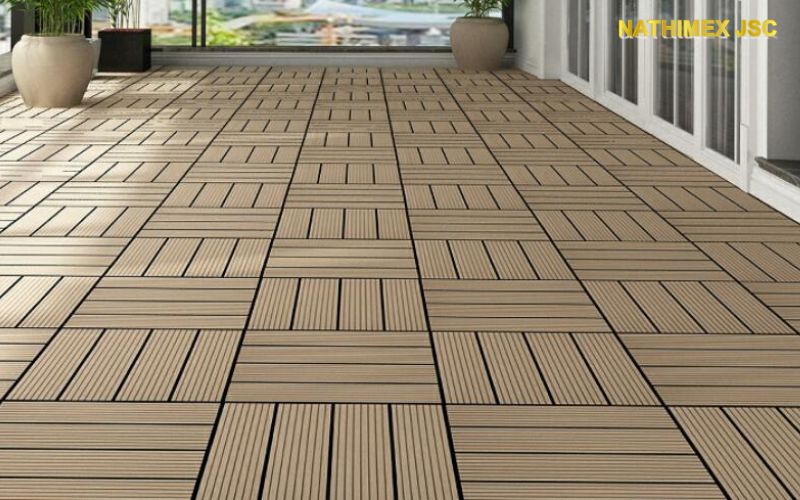Wood Plastic Composite (WPC) deck tiles, also known as wood-plastic composite deck tiles, are a popular choice for outdoor flooring options due to their durability, low maintenance, and eco-friendly nature. The manufacturing process of Wood Plastic Composite (WPC) deck tiles involves combining wood fibers or sawdust with plastic resin to create a strong and resilient material.
This process results in a product that resembles natural wood but requires far less maintenance and is much more resistant to weathering and environmental factors. In this article, we will take a closer look at the manufacturing process of Wood Plastic Composite (WPC) deck tiles and how these products are made.
General information about Wood Plastic Composite
Before going to learn about the production process, let's take a look at some useful information about this wood for those who have not studied it closely.
Wood plastic composite is a specialized product for both interior and exterior spaces. In English, this material has only one name, "Wood Plastic Composite", also abbreviated as WPC. Currently, we have two main groups of wood-plastic composite: PVC-based wood-plastic (for indoor use) and PE-based wood-plastic (for outdoor use). The reason for such a classification is because these two wood groups have different features. While PE-based wood plastic is resistant to water and harsh weather, PVC wood is not able to do this.
-
PE-based wood plastic (commonly known as outdoor wood plastic composite) is created from PE/HDPE resin combined with wood pulp and additives to make a finished product.
-
PVC-based wood (commonly known as indoor wood plastic composite) is created from PVC resin combined with wood pulp and various additives.
In general, the wood plastic composite production process is not too strict. They are manufactured on a high-tech line, with heat extrusion machines to form the required profile shapes. However, before that, wood plastic powder will be mixed evenly and then go through the chain to create compound beads. Compound beads are the only raw materials used in the extrusion process of plastic wood products
Step 1: Material Preparation
The first step in the manufacturing process of WPC deck tiles is preparing the material. Wood and plastic are both primary materials used in the manufacturing of WPC tiles. For a 12” x 12” tile, the materials required are approximately 30% wood flour or sawdust, 60% recycled plastic, and 10% of the required additives like UV stabilizers, colorants, and bonding agents. The materials are carefully selected and inspected for quality.
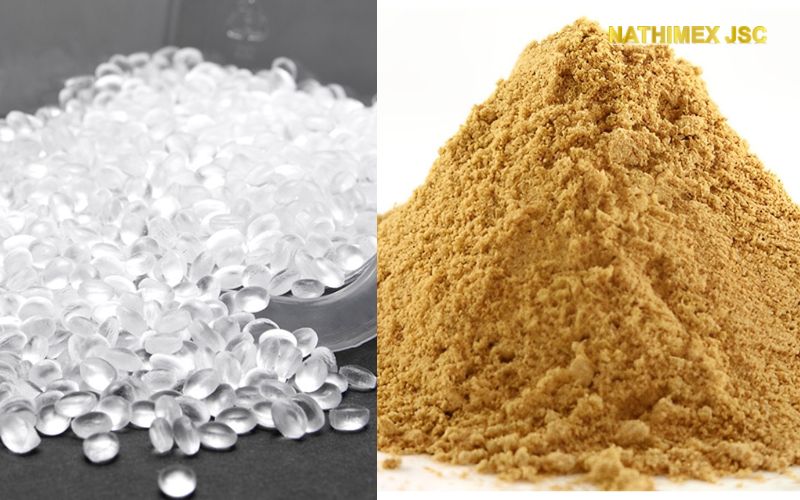
Step 2: Mixing and Extrusion
After preparing the materials, they are mixed together in a mixer. The mixing process ensures that the materials are well combined and evenly distributed. The mixed material is then fed into an extruder. The extruder feeds the material through a die, which shapes the material and converts it into the required tile size and shape.
Step 3: Cooling and Cutting
After extrusion, the material is cooled down by passing it through a cooling tank. This process is required to let the material set and maintain its shape. Once the material has cooled down, it is fed to a cutting line, where the required tile lengths are cut automatically.
Step 4: Surface Treatment
The surface treatment is a crucial process in the manufacturing of WPC deck tiles. The tiles are treated with ultraviolet (UV) stabilizers to protect them from sun damage, colorants to improve the tiles’ appearance, and bonding agents to improve their durability and resistance to moisture.
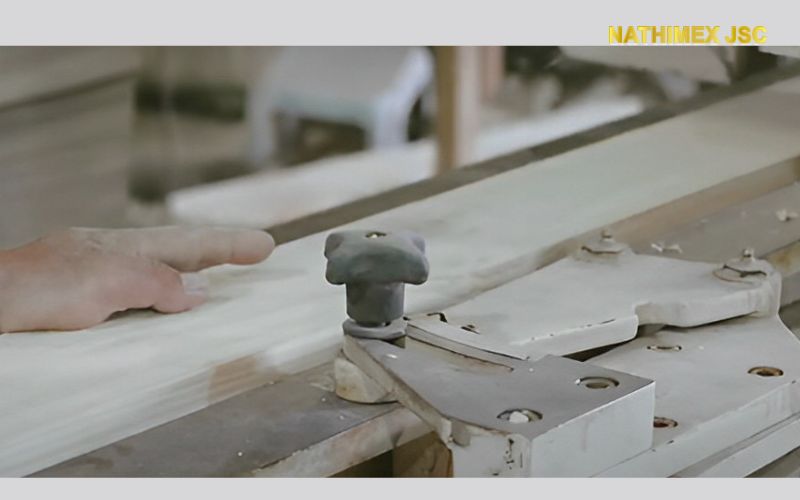
Step 5: Quality Control:
The finished deck tiles are then subjected to quality control tests to ensure that they meet the required standards for strength, durability, water resistance, and UV stability.
Step 6: Packing and Transportation
The final step in the manufacturing process of WPC deck tiles is packaging and transport. The tiles are packed neatly and securely before being shipped to the customers.
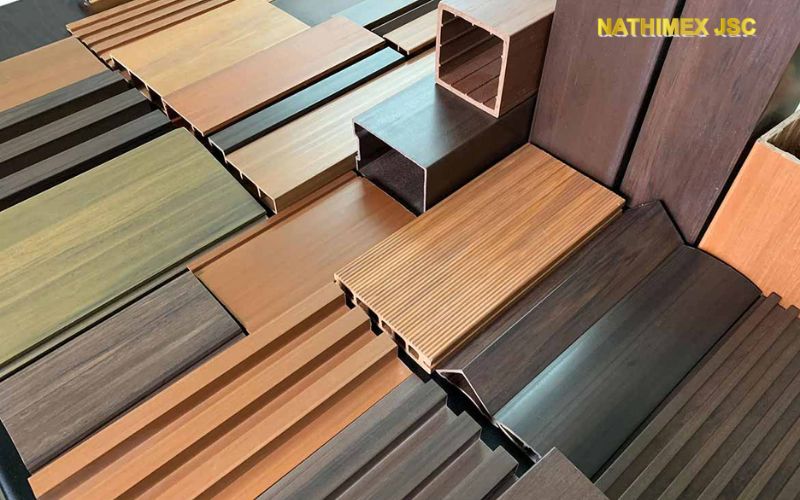
WPC (Wood Plastic Composite) deck tiles are a popular choice for outdoor activities such as decking, landscaping, and patio flooring. Here are some of the key functions and benefits of WPC deck tiles:
1. Weather resistance: Wood Plastic Composite (WPC) deck tiles are resistant to weather conditions such as rain, wind, and UV rays. This makes them ideal for outdoor activities as they can withstand harsh weather conditions and remain intact.
2. Durability: Wood Plastic Composite (WPC) deck tiles are made from a combination of wood fibers and plastic, making them strong and durable. They are resistant to scratches, fading, and staining, which means a long lifespan and low maintenance requirement.
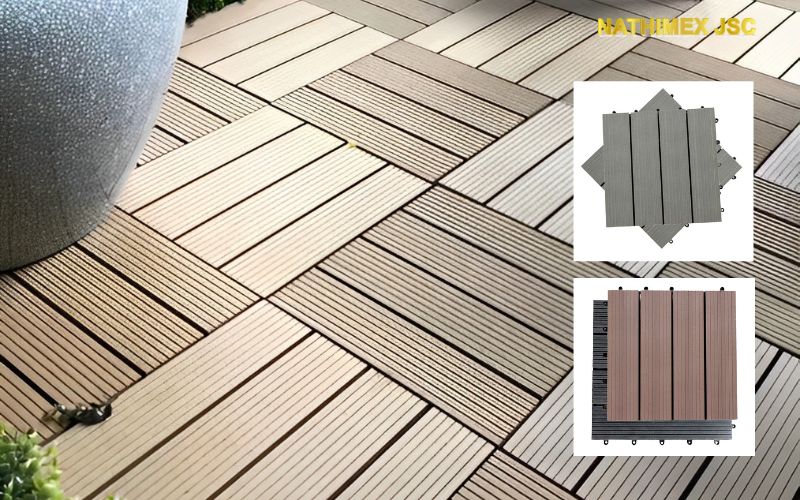
3. Easy to install: Wood Plastic Composite (WPC) deck tiles are designed to be easy to install and can be done in a matter of hours. This makes them a convenient option for DIY enthusiasts who want to save money on installation fees or for those who want to quicken the construction process.
4. Aesthetically pleasing: Wood Plastic Composite (WPC) deck tiles are available in a wide range of colors and designs, which means that they can be matched to the style of your outdoor space. They can be used to create a unique and beautiful outdoor living area that complements your home.
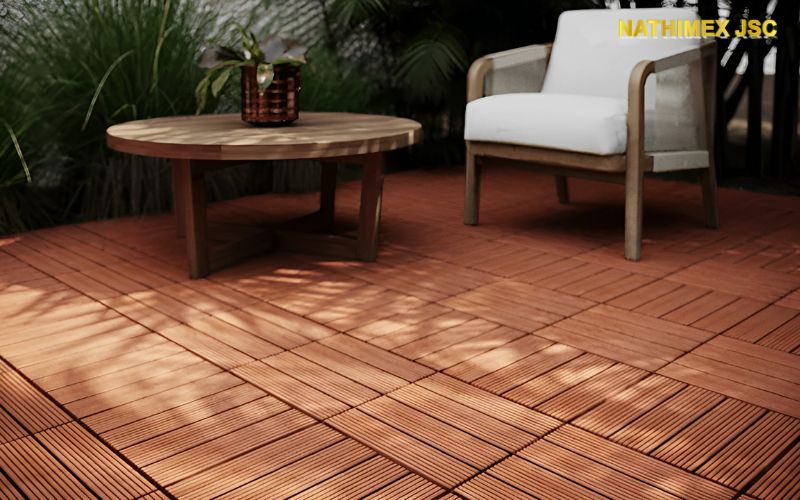
5. Eco-Friendly: Wood Plastic Composite (WPC) deck tiles are made from recyclable materials, making them environmentally sustainable. They are a green option for those who want to reduce their carbon footprint while also enjoying a high-quality product..
Overall, Wood Plastic Composite (WPC) deck tiles are a versatile and practical option for creating a beautiful and durable outdoor living area. They offer a balance between functionality, durability, and aesthetics, making them perfect for a wide range of outdoor activities.
Conclusion:
The manufacturing process of Wood Plastic Composite (WPC) deck tiles is a carefully planned and executed process. The tiles are made using a mixture of wood and plastic, and the materials are carefully selected and inspected for quality. The process involves mixing and extrusion, cooling, cutting, surface treatment and packaging. The final product is a durable, eco-friendly, and attractive tile that is easy to install and requires minimal maintenance
